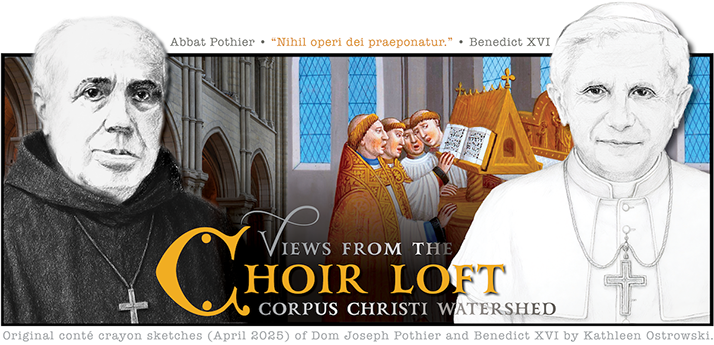 EOPLE are making a big deal about a scandalous song by GIA Publications, written for the LA Religious Education Congress later this month. Having listened to an excerpt of the song, I agree with those who insist such “beat music” should never be sung during the Holy Mass. Why an organization called The Gregorian Institute of America would promote that song is a mystery to me. But rather than “attack,” we should provide positive alternatives—beautiful and dignified melodies—such as those found in the Brébeuf hymnal, which the New Liturgical Movement (6/10/2019) called “hands down, the best Catholic hymnal ever published.”
EOPLE are making a big deal about a scandalous song by GIA Publications, written for the LA Religious Education Congress later this month. Having listened to an excerpt of the song, I agree with those who insist such “beat music” should never be sung during the Holy Mass. Why an organization called The Gregorian Institute of America would promote that song is a mystery to me. But rather than “attack,” we should provide positive alternatives—beautiful and dignified melodies—such as those found in the Brébeuf hymnal, which the New Liturgical Movement (6/10/2019) called “hands down, the best Catholic hymnal ever published.”
What Makes A Good Hymn Tune?
An excellent article was published in 1912 by the choirmaster of Westminster Cathedral (which is Roman Catholic, whereas Westminster Abbey is currently Protestant):
* PDF Download • “What Makes A Good Hymn?”
—A fascinating article by Sir Richard Runciman Terry (d. 1938).
In 1885, a Jesuit priest named Father Dreves published a melody which I consider to be excellent:
This famous melody is paired with numerous texts in the Brébeuf hymnal. For example:
The tune itself is called various names: Vom Himmel Hoch, Erfurt, Altona, and so on. It was once associated with Christmas, but lost this association a century ago (except in German-speaking countries). Below are examples with non-Christmas texts:
* PDF Download • “Vom Himmel Hoch” for Eastertide
—An example of “ALTONA” not being used for Christmas.
* PDF Download • “Vom Himmel Hoch” for General Use
—An example of “ALTONA” not being used for Christmas.
* PDF Download • “Vom Himmel Hoch” for St. Peter’s Day
—An example of “ALTONA” not being used for Christmas.
* PDF Download • “Vom Himmel Hoch” for Psalm 114
—An example of “ALTONA” not being used for Christmas.
* PDF Download • “Vom Himmel Hoch” for Pentecost
—An example of “ALTONA” not being used for Christmas.

An example (same tune) from the Brébeuf hymnal for the Holy Name:
An example (same tune) for Epiphany:
An ancient Catholic text suitable for Holy Communion (same tune):
An example for Christmas (same tune):
The beautiful harmonization (from the Brébeuf Choral Supplement) sounds interesting with the bass line removed—don’t you agree?
* Mp3 Download • “Altona” without the Bass
—This file has the Bass Line removed.
P.S.
Regarding the Los Angeles Religious Education Congress, I see the keynote speaker this year is Bishop Danny Flores. He was on the faculty of a high school where I taught for three years, and (once upon a time) served as the personal driver for Bishop René Gracida, who flew 39 bombing runs in Germany during World War II. Bishop Gracida told me that wherever they drove together—including very long road trips—he forced Bishop Flores (at that time, he was “Father”) to listen to Glenn Gould playing the Goldberg Variations. Awesome choice! Too bad the absolute best recording was not available in those days. [The best recording is a 1959 “live” version of Glenn Gould recorded in Salzburg.]


